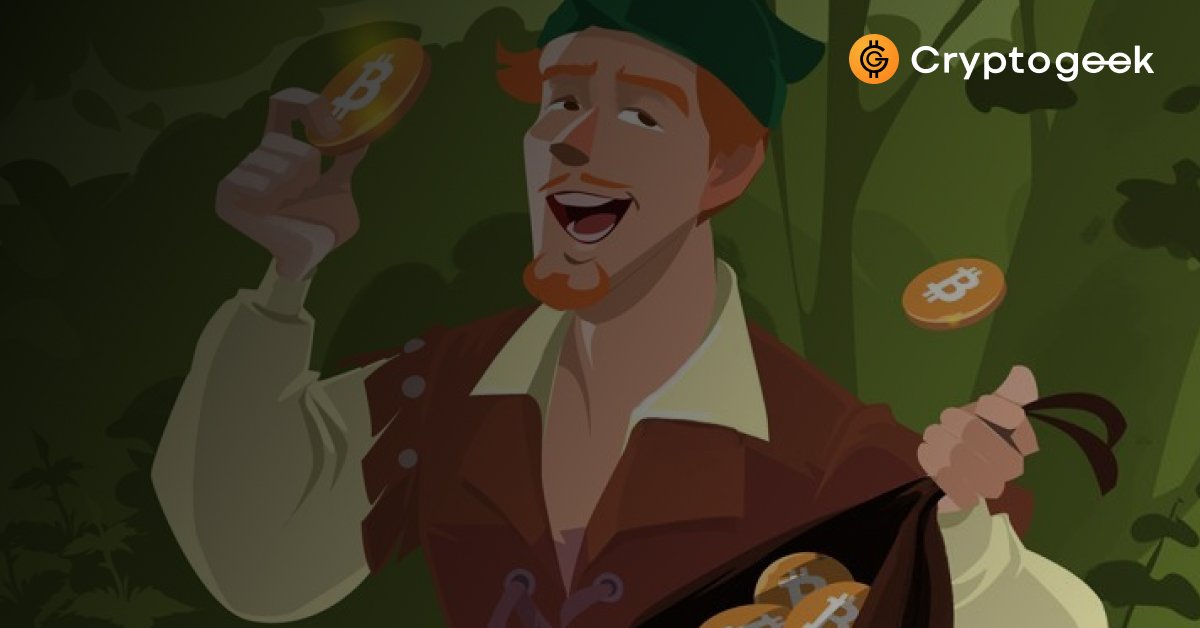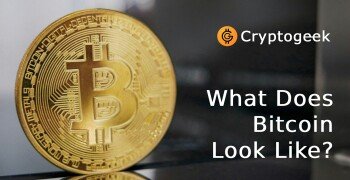Satoshi Nakamoto Net Worth 2022 — How Rich Is the Bitcoin Creator?


If we assume for a while that the creator of Bitcoin Satoshi Nakamoto is a real person, not a group of people under this alias, no matter what his name is, we can try to estimate the minimum amount of money he owns. It's understood that our estimation cannot include the money he earned anywhere besides Bitcoin mining. That's the reason why we say that it is a minimum net worth estimation. We can say that at least he has these bitcoins and the corresponding amount in Bitcoin hardforks. Thanks to the Whale Alert resource, we have enough data to track the riches of Satoshi Nakamoto held in BTC. According to our estimation, Satoshi Nakamoto's net worth is at least $15,8 billion. In the final part of this article, we will show how we got this figure. More than that, in this article, we will provide as much biographical content related to Nakamoto as possible. Perhaps this will give an insight into the probable person behind one of the biggest innovations in modern-day fintech.
What Do We Know About Satoshi Nakamoto?
Satoshi Nakamoto is primarily known as an inventor of the very first cryptocurrency, Bitcoin (BTC). As the Bitcoin network is based on blockchain, Nakamoto can be considered as the creator of blockchain technology, the most popular type of distributed ledger technology, and the most used DLT in the world of cryptocurrencies. The early forms of blockchain technology are known from 1982. However, it was Satoshi Nakamoto who took blockchain to the next level and gave this technology a second birth. With the ideas that were introduced to a wide audience with the appearance of the Ethereum platform, it became clear that blockchain itself is a very bright and fertile technology, probably more important than Bitcoin. The popular slogan reads "the future is blockchain". It means that blockchain enthusiasts believe that a serious part of the intermediary commissions and bureaucracy will be replaced with the smart contracts — fraud-proof algorithms operating on the blockchain while all kinds of data will be safely stored in immutable distributed ledgers. There is no limit for possible use cases for blockchain from data storage and finance to supply chains. Estonia is already experimenting with blockchain and the healthcare system. It is expected that more governments will rely on the benefits of blockchain in the future soon. The tech and business giants are working on blockchain-based products. All these things would be impossible without the work performed by Satoshi Nakamoto. It's fair to call him one of the architects of the future. Interestingly, even in the Internet Age, this person managed to leave no clues that could identify his actual identity. It shows that Satoshi was true to his ideals, and the fame of the Bitcoin inventor meant nothing to him. Privacy, decentralization, and anonymity were his prior values.
 Nakamoto was active in the community of cypherpunks and was communicating with some of the identified people via electronic messages. Some of these people have told of what they have been discussing with Satoshi in the early Bitcoin years. These accounts and Satoshi's public statements are everything we know about him. Since December 2010, he didn't make any statements nor there are no known cases of him contacting anyone in any form. Until recently, some people could have regarded him not alive as his wallet activity was zero for years but in May 2020 someone (allegedly, Nakamoto) moved 50 BTC from Satoshi's wallet to a different address. As we don't even know anything about the living conditions of Nakamoto, we can only assume that he decided to buy something, help someone or cash his savings out, and sent 50 BTC in order to do so. The coins he moved off the wallet were one of the earliest bitcoins ever mined. The coins were stored at this address for 11 years. Is there a possibility that Satoshi's 50 BTC could have been stolen? Well, that's a tough question as we assume that the Bitcoin creator is supposed to know how to keep his money safely. Nevertheless, as mentioned earlier, we don't know anything about his life. There are many possible explanations of how this money could have been withdrawn both with or without his consent. There is no place for fantasizing and speculations though.
Nakamoto was active in the community of cypherpunks and was communicating with some of the identified people via electronic messages. Some of these people have told of what they have been discussing with Satoshi in the early Bitcoin years. These accounts and Satoshi's public statements are everything we know about him. Since December 2010, he didn't make any statements nor there are no known cases of him contacting anyone in any form. Until recently, some people could have regarded him not alive as his wallet activity was zero for years but in May 2020 someone (allegedly, Nakamoto) moved 50 BTC from Satoshi's wallet to a different address. As we don't even know anything about the living conditions of Nakamoto, we can only assume that he decided to buy something, help someone or cash his savings out, and sent 50 BTC in order to do so. The coins he moved off the wallet were one of the earliest bitcoins ever mined. The coins were stored at this address for 11 years. Is there a possibility that Satoshi's 50 BTC could have been stolen? Well, that's a tough question as we assume that the Bitcoin creator is supposed to know how to keep his money safely. Nevertheless, as mentioned earlier, we don't know anything about his life. There are many possible explanations of how this money could have been withdrawn both with or without his consent. There is no place for fantasizing and speculations though.
According to Nakamoto himself, the work on the Bitcoin code was started in August 2007 — before the global financial crisis of 2008. It partly disputes the popular notion that the first cryptocurrency was created as a reaction to this crisis. It's fairer to say that Bitcoin has been under development at the times when the crisis was marching the globe. 2007 wasn't the worst year of this financial decline but any person interested in the economy has been aware of the fact that things will get much worse. That's the reason why Nakamoto's project was a strong new response to future economic challenges. We have already witnessed that in the spring of 2020 when the COVID-19 epidemic has hit the Western world, Bitcoin turned out to be more sustainable than many fiat currencies. The future crises of the neoliberal system will prove cryptocurrencies' strengths to a wider public.
12 years ago, Satoshi Nakamoto dropped a 9-page bomb on the global financial system.
— Edge (@EdgeWallet) October 31, 2020
Happy Birthday to the #Bitcoin Whitepaper! pic.twitter.com/KO1ey6vPQI
But let's go back to the formative years of Bitcoin! On August 18, 2008, in the eye of the crisis storm, Satoshi (or one of his companions) registered a Bitcoin.org domain. October 31, 2008, was the historical date when Nakamoto had sent the members of the metzdowd.com mailing list the Bitcoin white paper called "Bitcoin: A Peer-to-Peer Electronic Cash System". In the white paper, Satoshi points at the main drawback of fiat money — the need for trust to the central bank although this trust is often abused by the banks. Creating Bitcoin, Nakamoto solved the notorious Byzantine Generals Problem — something that seemed damn hard for many scientists for years. The innovation of the brand new network was the solution to the double-spending issue that was dooming the previous efforts of creating digital money that needed no third party to operate. The cypherpunk activists associated with metzdowd.com were involved in the work on a digital monetary system for years beginning with the 1990s (for instance, a Wei Dai project) so using this website was a totally understandable decision. More than that, metzdowd.com had a mailing list of cypherpunks, so posting white paper there was a smart move that helped to reach the proper audience quickly.
On 9 January 2009, the Genesis Block was mined. Block one contained the exact text of the headline of the UK newspaper The Times released the same day: "The Times 03/Jan/2009 Chancellor on brink of second bailout for banks”. This statement wasn't random as it was stressing the failure of the world banking system. The new, digital peer-to-peer, financial network was set to provide people with better tools of self-finance. The fact that Nakamoto was referencing the British publication settled the suspicion that he was a UK citizen or at least a resident of this country. The same year, the source code of Bitcoin became available for the public. On January 12, 2009, Nakamoto sent the first BTC transaction. He sent 10 BTC to Hal Finney, a software developer, and a cypherpunk. Finney remembered that when he was communicating with Nakamoto over the emails, he believed that Satoshi was a young person of Japanese ancestry, clever and sincere. Wei Dai and Nick Szabo were the early adopters of Bitcoin. They and Hal Finney are popular candidates in being the real persons behind the Satoshi Nakamoto moniker. There is no evidence in being so though plus they didn't confirm these claims.
In 2009 - 2010 Satoshi was active on the Bitcoin forum, working on modifications of the network and collaborating with other developers. In August 2010, there was the only security vulnerability in Bitcoin history. The problem was addressed after the hackers have created dozens of millions of fake bitcoins. As a result of the hard fork, those bitcoins have lost their value. Since then, Bitcoin has stayed safe all the time. In December 2010, Nakamoto shared all the critical data with Gavin Andersen and quit working on his brainchild. The last known statement made by him allegedly made in the private conversation on the Internet tracks back to April 2011. He said that he has moved on to other things. Since then, Satoshi left the public eye forever. All that remains is a Bitcoin network, a famous white paper, and over 500 forum posts. Why did he do that? There are many assumptions, but none of them can be accurately proved. One of the versions is that the withdrawal from the leading position in the development of the Bitcoin network was natural for Nakamoto's strive for decentralization. Allegedly, he didn't want his persona to have any pressure in the dev community. Is it so or not? Who knows? Probably we will learn it someday but probably not as we really don't have enough clues to hope for Nakamoto's deanonymization. The analysis of the timestamps of forum posts made by Nakamoto and his spelling point that he probably was a Great Britain resident. Of course, this information is not enough to be confident in anything. We are not going to list all the people that were named among the most probable real Satoshi as none of these speculations have a strong basis. There are many articles covering this topic.
What is Nakamoto Net Worth?
Bitcoin mining is the process of validation of the transactions broadcasted on the Bitcoin network. The validation requires solving math puzzles in order to protect the network from spam attacks. The difficulty of these puzzles became incredibly high in the mid-2010s. To incentivize the miners, the network rewards them with newly released bitcoins. This protocol is called Proof of Work (or shortly Pow) and is used in many other cryptocurrency networks. In the early days of Bitcoin, the mining difficulty wasn't that high, it was possible to mine this cryptocurrency using the home PC. The reward is set to decrease by 50% every 210,000 blocks. So, at the time of writing this article, the block reward is set at 6.25 BTC while initially, the reward was 50 bitcoins. Bitcoin is deflationary and the total supply of its coins is set at 21 million BTC. Until 2010, Satoshi Nakamoto was the only Bitcoin miner in the world and didn't buy any BTC. According to estimations, before quitting the public phase of the participation in the Bitcoin development, Satoshi Nakamoto mined around 1 million BTC. Until May 2020, Nakamoto's Bitcoin reserves remained untouchable when 50 BTC were moved off Satoshi's address.
 We are not going to guess how much money the Bitcoin inventor made apart from mining Bitcoin. As anyone can see, we simply don't have enough consistent data to really try. Let's focus on his crypto riches. The problem of calculating Nakamoto's net worth in USD is more than just multiplying one million to the current BTC market price. Why? The answer is because of hardforks! OK, first, we will need to provide a definition of hardfork. Hardfork is a serious change in the cryptocurrency protocol that creates a new branch of blocks at some moment, making the previously valid blocks invalid or making all the new blocks on the remaining chain invalid for this blockchain iteration. Usually, when the community has no opinion unity on the future changes to the protocol, the hardfork appears. So the supporters of new implementations can follow the new chain, and a more conservative part of the community continues to use the old version. Sometimes, the appearance of hardforks follows security breaches so the vulnerabilities are addressed in the new versions of the protocol. Nevertheless, often communities create forks just to implement changes to the currency functions.
We are not going to guess how much money the Bitcoin inventor made apart from mining Bitcoin. As anyone can see, we simply don't have enough consistent data to really try. Let's focus on his crypto riches. The problem of calculating Nakamoto's net worth in USD is more than just multiplying one million to the current BTC market price. Why? The answer is because of hardforks! OK, first, we will need to provide a definition of hardfork. Hardfork is a serious change in the cryptocurrency protocol that creates a new branch of blocks at some moment, making the previously valid blocks invalid or making all the new blocks on the remaining chain invalid for this blockchain iteration. Usually, when the community has no opinion unity on the future changes to the protocol, the hardfork appears. So the supporters of new implementations can follow the new chain, and a more conservative part of the community continues to use the old version. Sometimes, the appearance of hardforks follows security breaches so the vulnerabilities are addressed in the new versions of the protocol. Nevertheless, often communities create forks just to implement changes to the currency functions.
When the hardfork takes place, usually the holders of the previous version receive the respective amount of a new currency created as a result of the hardfork. Bitcoin went through a number of harforks. Interestingly, none of the new coins created as a Bitcoin hardfork managed to eclipse the first cryptocurrency in terms of popularity, traction, market cap, and so on. However, think of the fact that each of these forks was giving Satoshi around 1 million new coins. Some of these coins, like Bitcoin Cash and Bitcoin SV, became prominent on the market and are traded at high prices. So, our job is to calculate the current worth of Nakamoto's BTC and add the worths of all the Bitcoin hardforks that he could collect.
To date (November 6, 2020) there are dozens of active Bitcoin hardforks in existence. The full list of coins Satoshi probably has thanks to his BTC stacks includes Bitvote ($212,253 per 1 million), Bitcoin Atom ($63,253 per 1 million), Bitcoin Candy ($7 per 1 million), Bitcoin Cash ($246,010,000 per 1 million), Bitcoin Cloud ($1,063 per 1 million), Bitcoin Diamond ($439,959 per 1 million), Bitcoin Faith ($502,898 per 1 million), Bitcoin File ($728.47 per 1 million), Bitcoin God ($164,707 per 1 million), Bitcoin Gold ($7,200,000 per 1 million), Bitcoin Pay ($14,633 per 1 million), Bitcoin SV ($158,770,000 per 1 million), Bitcoin Stash ($1,510,000 per 1 million), BitcoinX ($338 per 1 million), Bithereum ($1,246.8 per 1 million), Microbitcoin ($16.63 per 1 million), Super Bitcoin ($629,082 per 1 million), Bitcore ($223,636 per 1 million), Bitcoin 2 ($565,278 per 1 million), and finally Clams ($1,400,000 per 1 million). Phew!
Actually, Satoshi has much more coins that were sent to each BTC holder, but most of them are absolutely worthless so we didn't mention them. So we are at the final stage, at last! Let's add the combined value of these coins to a USD expression of a million BTC. The USD summary of all the coins received as a result of hardforks is $417,709,098.9 which already makes Satoshi Nakamoto a multi-millionaire. The rough BTC amount he has can be valued as a whopping $15,445,000,000 (at the November 6, 2020 price level). The overall sum is $15,862,709,098.9 or let's say $15,8 billion. It settles him around 44th position in the list of the richest people of the world. Of course, hardcore cryptocurrency enthusiasts will prefer not to convert Nakamoto's money to dollars and will say that this person has 1 million bitcoins. We, in Cryptogeek, are not going to argue this methodology! ;)








